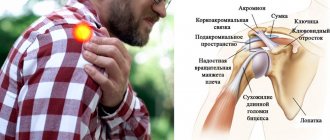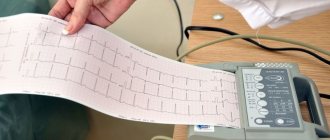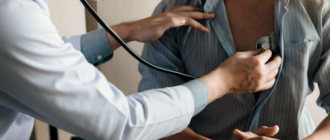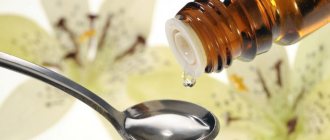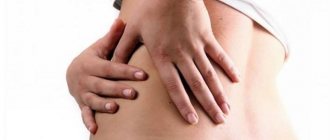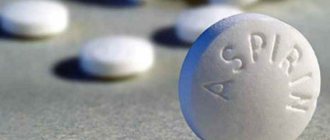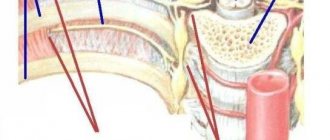Pain under the scapula is a type of spinal pain that can occur against the background of muscle spasms, myofascial syndrome, chronic vertebrogenic diseases, as well as be a consequence of injuries and physical and mechanical damage to the musculoskeletal system. Localization of pain in the back from the back can indicate not only vertebral pathologies, but also indicate possible disturbances in the functioning of internal organs: the cardiac region and fundus of the stomach, spleen, peritoneum, and respiratory tract. Cardiac pathologies, for example, myocarditis, angina pectoris or myocardial infarction, can also manifest as pain under the scapula on the left side. In approximately 8.3% of cases, intense pain under the scapula on the left side is a surgical symptom and can occur when the spleen is ruptured (or one of its lobes is bent), as well as ischemic damage to the organ parenchyma as a result of occlusion of blood vessels and arteries.
Pain under the left shoulder blade from the back
Possible reasons
There are many reasons that can cause pain and tenderness under the shoulder blade. It is necessary to begin the diagnosis by excluding the traumatic factor and possible damage to the scapula. If the pain under the shoulder blade appears suddenly or its occurrence was preceded by any physical or mechanical impact on this area (impact, fall), you should contact a traumatologist and have an x-ray taken. A scapula fracture is a fairly serious pathology, which is characterized by extensive displacement of bone fragments, so the treatment and rehabilitation period can take several months.
Scapula fracture
If the emergency room did not diagnose any injuries (including dislocations, soft tissue bruises, displacement of the thoracic and proximal lumbar vertebrae, etc.), it is recommended to consult a surgeon or orthopedist for pain in the scapula area. The doctor will conduct an initial examination and, if necessary, give a referral to specialized specialists: a neurologist, neurosurgeon, cardiologist, pulmonologist or gastroenterologist.
At an appointment with an orthopedist
Pathologies of the bone frame
This is the most common cause of spinal pain localized in the shoulder blades. Since the scapula bone is part of the upper shoulder girdle, painful sensations (in most cases – chronic, without timely medication and physiotherapeutic correction):
- osteochondrosis;
- spondylosis;
- osteosclerosis;
- bone marrow edema;
- intervertebral hernia and protrusion;
- radicular syndrome;
- rheumatoid arthritis;
- Bekhterev's disease, etc.
Spondylosis deformans
Pain under the shoulder blade on the side of the spine can be a sign of osteoporosis, a disease characterized by a pathological decrease in bone mass. Osteoporosis, regardless of the location of the pathological process, always leads to disability of the patient, therefore bone densitometry can be included in the complex of diagnostic measures.
Osteoporosis of the spine
It is also important to exclude infectious lesions of the scapula - acute hematogenous purulent-necrotizing osteomyelitis (purulent arthritis of the sternoclavicular joint). The pathology has a fairly severe course and is almost always caused by pathogenic bacteria capable of producing pus (staphylococci, mycobacterium tuberculosis). The clinical picture of osteomyelitis is quite pronounced and allows for preliminary diagnosis of the disease during the initial examination.
Important! Treatment for osteomyelitis of the scapula should begin as early as possible, since the progressive growth of bacteria can lead to purulent melting of the bone and the development of a systemic inflammatory reaction.
Osteomyelitis is
Muscle diseases
A large number of muscles are attached to the shoulder blades (for example, the triceps and biceps brachii muscles, deltoid and omohyoid muscles), so inflammatory, infectious and other lesions of the muscle fiber can also be one of the causes of pain in this area. The following diseases most often belong to this group of pathologies.
- Myositis. This is an inflammation of muscle tissue, which can develop both against the background of infectious pathologies and as a result of traumatic exposure. The prognosis in the vast majority of cases is favorable (myositis ossificans is an exception).
Shoulder myositis - Ossification of the subscapularis muscles . This is a serious disease, with a progressive course inevitably leading to disability and death of the patient. The process is the ossification of muscle tissue, in which muscles are replaced by bone formations.
- Myopathy . A chronic muscle disease that occurs primarily when protein metabolism is disrupted. An extreme form of myopathy is rhabdomyolysis, a pathology in which muscle cells are destroyed and toxic protein breakdown products are released into the blood.
What is myopathy
Pain under the shoulder blade can also be associated with irritation of trigger points - muscle tension nodes, when exposed to which a person feels pain of varying intensity (mainly aching or cutting). Myofascial pain syndrome can be not only a manifestation of chronic pathologies of the musculoskeletal system, but also the result of excessive physical exertion, especially if the person did not have sufficient physical training before starting classes.
Anatomy of the shoulder joint
Characteristics of pain
If the pain in your heart radiates to your shoulder blade, don’t panic right away. To begin with, you must clearly understand the nature of the sensations that arise. In 90% of cases, this will allow you to independently understand the cause of the symptom. Substernal discomfort, accompanied by irradiation to some other area of the body, can be:
- sharp or blunt;
- pressing or stabbing;
- cutting or burning.
Having decided on this point, the patient most often himself guesses about the primary source of the pathological symptom. It is equally important to note the area where the pain is spreading. Sometimes it comes from the center and goes to the periphery of the chest. In some cases, it migrates into the interscapular space, and sometimes affects the lower jaw and even the hand.
Pay attention to the duration and strength of unpleasant sensations, to factors that can change their intensity and location. This refers to the use of vasodilators and changing posture.
Neuropathic pain under the left shoulder blade
Neuropathic pain is a fairly common type of pain in this localization, so diagnosis for complaints of pain under the scapula always begins with excluding possible neurogenic causes (after excluding the traumatic factor).
Neuropathic pain – what is it?
The scapula is a bone located in the upper shoulder girdle and serves as the articulation of the skeletal base of the shoulder (tubular humerus) and the collarbone. The anterior surface of the scapula has a slightly concave shape and is called the costal surface. The posterior surface (dorsal) is adjacent to the spinal column, which consists of five sections and vertebrae connected in a vertical sequence, therefore one of the main causes of pain in this localization is diseases of the spine.
The mechanism of development of pain
How does it happen that the heart hurts, but it stings under the shoulder blade, and most often with the left one? I think the answer to this question interests many readers. To understand the origin of this phenomenon, it is necessary to delve a little into the doctrine of the processes of intrauterine development of the fetus. At the time when our heart takes on its final form, the formation of the neck, back and girdle of the upper extremities, which includes not only the arms themselves, but also the shoulder blades, is completed - all these formations receive nerve fibers from nearby segments of the spinal cord. Therefore, the pain impulse can “jump” from one floor to another. This phenomenon was called irradiation.
This leads to the conclusion: there is no need to go to extremes and attribute a heart attack to yourself before a full medical examination.
What other diseases should be excluded?
Pain under the scapula, localized from the back, can also be a manifestation of pathologies of internal organs, for the diagnosis of which a careful collection of an initial history is of great importance. When contacting a doctor, the patient must describe in detail the existing symptoms, as well as assess the relationship of the pain syndrome with various factors: food intake, physical activity, psycho-emotional state, etc. The most likely causes of pain under the left shoulder blade, as well as their symptoms, are listed in the table below.
Table. Diseases of the internal organs as a cause of pain under the left shoulder blade.
| Organ | Possible diseases | Possible symptoms |
| Heart | Myocardial infarction, cardiomyopathy, myocarditis, myocardial infarction (necrosis), angina pectoris, arrhythmia. | The most typical manifestations of heart pathologies are changes in the number of heartbeats, shortness of breath, pain in the left side of the sternum, and breathing problems. With a progressive course, arterial instability is observed, signs of hypoxia - oxygen starvation (headaches, dizziness, migraines, hypertension) may appear. |
| Organs of the respiratory system (left side) | Pleurisy, bronchitis, pulmonary tuberculosis, pneumonia. | The leading symptom of respiratory pathologies is cough, but it is important to consider that in some diseases, for example, asymptomatic pneumonia, the cough is of low intensity and can occur in the form of coughing up to 4-6 times a day. In a typical course, the following symptoms are observed: headache, fever, pain in the chest area, which can radiate to the scapula area, sputum or purulent exudate. |
| Spleen | Splenic rupture. | This is a surgical pathology, the symptoms of which depend on the type of rupture. The most characteristic signs include tension in the abdominal wall (breathing is carried out superficially, the abdominal muscles do not take part in the act of breathing) and the forced position of the body adopted by the patient. The classic position for a ruptured spleen is to lie on your left side with your legs brought up to your chest. |
| Stomach (cardia and body of the stomach) | Gastritis, polyposis, stomach ulcer. | The main symptoms of gastroenterological pathologies: stomach pain, nausea, lack of appetite, bitterness and metallic taste in the mouth, stool upset. Pain under the left shoulder blade when the cardiac part of the stomach or its body is affected is of a reflected nature and occurs mainly during exacerbations as radiating pain. |
Symptoms of a heart attack in men and women
Treatment
Help before diagnosis
Considering the variety of causes of pain under the left shoulder blade, it is extremely difficult for a doctor to give recommendations until the underlying pathology is identified. During the examination, it is advisable to reduce the load on the back muscles in order to eliminate simple fatigue and overexertion, which can cause persistent pain symptoms. If the sensations are unbearable, analgesics are used and the patient is immediately hospitalized.
Conservative therapy
The treatment plan is selected only after a complete diagnosis and determination of the etiological factors of pain under the left shoulder blade. If the patient suffers from severe discomfort, anti-inflammatory drugs and muscle relaxants are recommended, which quickly relieve painful sensations. For severe pain, therapeutic blockades and the administration of narcotic analgesics are effective. Taking into account the disease, a mode of physical activity is selected.
Drug therapy is prescribed by a specialist of the appropriate profile. For pain due to heart damage, the cardiologist prescribes antianginal and antiarrhythmic drugs, antiplatelet agents and anticoagulants, and antihypertensive drugs. Diseases of the bronchopulmonary system require the participation of a pulmonologist and the use of antibiotics, expectorants, and specific anti-tuberculosis drugs.
For gastrointestinal pathologies, a suitable diet is selected and therapy is supplemented with enzyme preparations, prokinetics, antacids and antisecretory medications. In neurology, neurometabolic agents, B vitamins, and drugs that improve microcirculation and rheological properties of blood are indicated to eliminate radicular syndrome.
For postural disorders and other problems with the spine, non-drug methods are actively used: traction therapy, therapeutic massage, exercise therapy. Among physiotherapeutic methods, balneotherapy (sulfide and radon baths), mud therapy, and reflexology are popular. It is possible to increase the effectiveness of drug treatment by electrophoresis of drugs directly to the affected area.
Surgery
Surgical methods are indicated when conservative treatment is ineffective or in acute life-threatening pathologies, when delay is dangerous to the life and health of the patient. The second group of operations includes methods of stenting, angioplasty and bypass surgery for myocardial infarction, the assistance of abdominal or thoracic surgeons for injuries, purulent processes, and internal bleeding.
Planned surgical interventions are often prescribed in neurosurgery for severe radicular syndrome and intervertebral hernia. To eliminate pain associated with compression of nerve structures, microdiscectomy and laser vaporization of the disc are performed. In rare cases, stabilizing operations on the spine are resorted to (interbody fusion, application of a Halo device, transpedicular fixation).
What to do?
Self-treatment of pain under the left shoulder blade at home is impossible due to the large number of reasons that can provoke the occurrence of this symptom. To do this, you need to see a doctor and undergo the minimum required set of diagnostics, including x-ray examination, MRI or CT (if necessary), electromyography and densitometry (if osteoporosis or osteosclerosis is suspected).
Electromyography
Without visiting a doctor, it is only permissible to use emergency first aid measures in cases where the patient can determine with great certainty what exactly caused the pain.
Expert advice
Many people with back pain that develops against the background of osteochondrosis begin to warm the affected area with heating pads, apply alcohol compresses, go to the bathhouse or rub themselves with gels with an irritating effect based on capsoicin. This cannot be done, since the nerve is pinched, inflamed and swollen. Such treatment only worsens the situation. To quickly get rid of unpleasant sensations, take NSAIDs, limit yourself in physical activity and use local anesthetic drugs.
Clinical case
Patient A., 35 years old, came to the emergency department with complaints of nagging pain in the heart area that radiated to the scapula.
This symptom appeared after sharply leaning to the side with dumbbells while working out in the gym. The patient allegedly heard a click. Objectively, he is calm, his skin is of normal color, dry, his pulse and blood pressure are within normal limits. Palpation of paravertebral points in the interscapular region is painful, muscle tension is detected, more on the left, and lateral movements are also limited. A preliminary diagnosis was made: “Osteochondrosis of the thoracic spine, pain syndrome.” An ECG and CT scan of the thoracic spine were performed. Changes characteristic of osteochondrosis were found. The ECG revealed no pathology.
The patient was prescribed Meloxicam, Amelotex gel, Tizalud, Milgamma, and L-lysine aescinate. Three days later, his condition improved significantly, and he was discharged for outpatient follow-up treatment.
Have you encountered a similar symptom? What were your actions? Let's discuss this in the comments.
